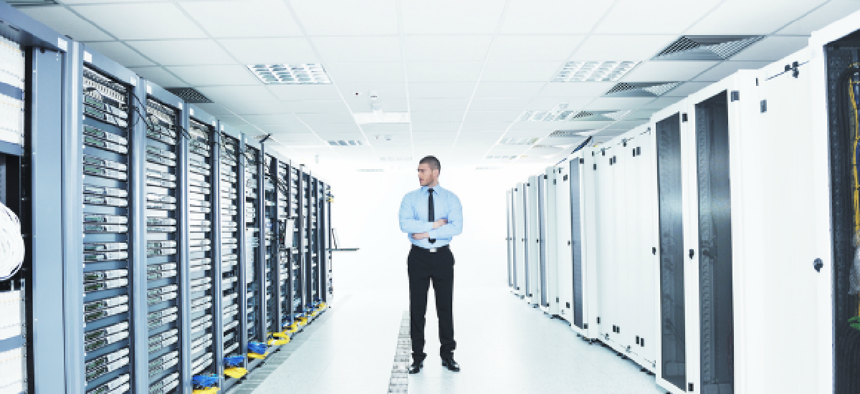4 ways to get a handle on software-defined data centers


Connecting state and local government leaders
Instead of trying to manage all facets of the SDDC separately, administrators need to tackle networking, compute, storage, security as a whole.
New technologies, including virtualization solutions, have upped the ante when it comes to network management. Now, managing a federal IT network is not just like herding cats; it’s like herding cats that are being chased by dogs that just escaped from the kennel.
Federal agencies have been asked to move quickly toward a virtualized environment anchored by software-defined data centers (SDDCs). On the surface, this makes a lot of sense. Government organizations are seeking to literally lighten their IT load in order to reduce expenditures, better manage an increasingly dispersed and virtualized work force and gain control over the entire network regardless of location.
SDDCs are ideal for doing this, and hold great promise. By eschewing legacy hardware, SDDC will ultimately make federal IT departments more efficient. Managers will be able to control and respond to issues without having to be in a singular location, for example, or address potentially complex and time-consuming hardware issues. They will certainly help organizations be more nimble, saving them time and money, while offering them a possible way to effectively manage a virtual military.
But while software is definitely the answer, it’s also the cause of many headaches. Consider that, in a recent survey by my company, SolarWinds, 42 percent of government IT professionals stated that virtualization technology contributes significantly to management challenges.
These challenges are coming from different angles, but there are four specific areas that seem to be presenting managers with the most difficulty:
1. Gaining visibility across technology boundaries
Network, storage, applications and compute components all come together via virtualization, and all of them are found under the SDDC umbrella. While this may sound ideal from a control standpoint, it presents possibly the greatest challenge. Rather than simplifying things, this convergence is creating a blurring of problems among all of these disparate components. The blurring is creating significant management challenges. For one thing, it may not be easy to quickly determine the root of a problem when everything looks like a bowl of spaghetti. Add converged infrastructure, application performance and hybrid cloud solutions, and the whole thing becomes a real mess.
2. Managing workload mobility
Traditionally, virtualization has operated within a contained portion of the network, such that changes in the virtualization environment didn’t usually affect the broader network. But like everything else, those barriers are coming down. The concept of workload mobility – virtually moving workloads between physical locations – is gaining popularity. And with this comes the chance that the rapid movement of workloads could cause new problems for the overall network.
3. Making sure storage isn’t forgotten
Just as workload mobility can impinge on networks, virtualization can result in storage being left behind. Storage systems have traditionally been very complex and hardware- and disk-dependent. If networks become more software-defined and flexible, storage can easily get left behind. To ensure this does not happen, federal IT administrators must engage in advanced planning and invest in technology to make sure storage systems can handle mobility enabled by server virtualization and SDDC.
4. Virtualizing applications and leveraging automation with stability
One of the benefits of SDDC is that administrators have more flexibility when it comes to creating new systems or making changes to existing systems and application stacks. But even this presents a challenge, because it requires administrators to re-evaluate how they think about managing applications. Traditionally, they’ve kept a tight rein on changes that are made to mission-critical application systems because failures and downtimes can result from these changes. These two cultures will have to find ways to leverage the power and flexibility of virtualization without introducing instability into critical applications.
The end result is that instead of trying to manage networking, compute, storage, security and all other facets of SDDC separately, administrators need to rethink their approach and tackle all of them as a whole. This tactic will require managers to deploy solutions that help them manage the entire virtual network, including the data center, from a single point of view, allowing them to pinpoint potential trouble spots in all areas and respond to them in a timely manner.
It’s a challenge, to be sure, but one that will ultimately bear fruit in the form of a more streamlined, easier-to-manage network. That may seem counterintuitive right now – and a long way off – but knowing how to tackle some of the points that are causing the most pain is the first step in getting a handle on the complexities of SDDC and virtualized federal IT networks.




